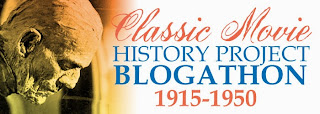The Snake Pit is a 1948 American drama film directed by Anatole Litvak and stars Olivia de Havilland, Mark Stevens, Leo Genn, Celeste Holm, Beulah Bondi, and Lee Patrick. It is based on the 1946 best-selling novel of the same name, written by Mary Jane Ward, who had been confined to a state mental hospital for over eight months. The novel was adapted for the screen by Millen Brand, Arthur Laurents (uncredited) and Frank Partos. The film tells the story of a woman who finds herself in an ‘insane asylum’ and cannot recall how she got there.
In the late 1940s, 20th Century Fox produced several dramas dealing with social issues including this film, as well, as Pinky (1949), Gentleman’s Agreement (1947) before it. [T]his type of drama, dubbed the “problem picture” in promotion and publicity, in which an urgent social issue such as racial prejudice, anti-Semitism, juvenile delinquency, or alcoholism was dramatised in a major production with major stars. This was Hollywood’s attempt to deal with serious subject matters.
Litvak insisted upon three months of research. He asked the entire cast and crew to accompany him to various mental institutions and to lectures by leading psychiatrists. In her research, de Havilland also attended therapy sessions (when allowed), and social functions at the institutions, including dinners and dances. Much of the film was filmed in the Camarillo State Mental Hospital in California.
For its time, The Snake Pit is a film that portrays women with mental health issues fairly well. In watching the film, de Havilland (as Virginia Cunningham) draws us into her despair, her inner turmoil. It is hearbreaking to watch how she cannot remember how she came to be in this institution nor siginificant details and people in her life. Her mental breakdown leans toward the severe end of the spectrum, if we think in clinical terms.
At the hospital, Virginia is treated by the good Dr. Kik (Leo Genn), who using Freudian psychoanalytic methods, commit to help his patient recover. Virginia’s husband, Robert (Mark Stevens) also proves to be quite supportive during such a difficult time. Virginia’s stay at this ‘asylum’ is not a short one, and it’s certainly not an easy one either.
We see how over-crowded the institution is. The staff is not horrible, but they are not the friendliest types either. There is a scene where all of the psychiatrists are discussing the number of patients, the lack of beds, and how they have to figure out who to discharge to make room for still more patients. Sadly, the state of mental health centres these days is still dealing with not enough space.
In the film, we see Virginia receive electro convulsive therapy to help ‘open her mind’ a little more. Thank goodness this type of treatment has evolved since then! Her sessions with Dr. Kik are interesting, with a portrait of Freud behind him, Dr. Kik is able to slowly piece the puzzle together and help Virginia figure out the ’cause’ of her breakdown. While doing this, Virginia is moved around from one ward into the next. Hearing Virginia’s thoughts (as voice overs) clearly makes us ‘feel’ for her in terms of her state of confusion, sadness, and lucidity as well. Over time, she realises she is not ‘the worst’ and that others may benefit from her while she’s in this institution. As well, her friendship with Hester (Betsy Blair) is endearing to watch, as Hester has become almost mute due to her severe condition.
My reasons to write about this film are twofold. One, I wanted to explore how social issues were portrayed on film in 1948. And two, I work in the field of mental health research, and films that deal with the topic are always of interest. The Snake Pit did not disappoint. The scene which gives the film its title truly stands out, and it serves as an excellent visualisation of how unsettled and out of place someone with mental health issues may feel. De Havilland’s performance is remarkable. But her supporting cast also does a tremendous job in making this film more believable, if you will. The cinematography and sound design work quite well. The crane shot of the ‘pit’ is very, very well done. As a cinematic experience, it is a film that I highly recommend, whether you know much about mental health issues or not.
It is also important to mention that not only did this film garner five Academy Award nomination; winning for Best Sound Recording. But along with the novel, it helped in changing legislation passed in many states to better the conditions of state mental institutions and provide better treatment for the patients. This is certainly most commendable.
** This review is part of The Classic Movie History Project Blogathon.
Sources: wikipedia, tcm.com.






